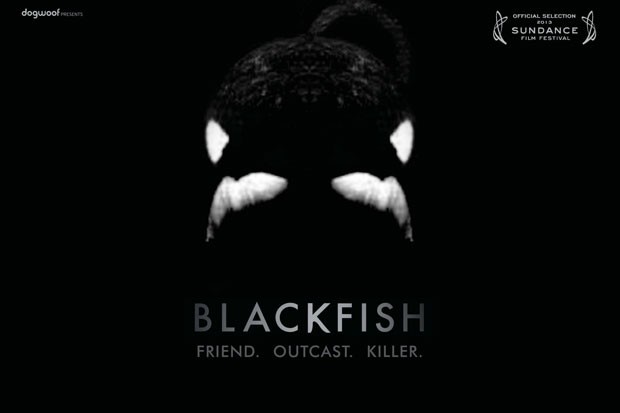By: Amy Andrukonis
Sentry Staff Reporter
Animal rights activism is making waves. This movement is humming, simmering, gaining ground, picking up speed and accumulating support. Organizations like People for the Ethical Treatment of Animals (PETA) and the Society for the Prevention of Cruelty to Animals (SPCA) are expanding. For years, activists have been calling for the humane treatment of animals, and now, more than ever, people are listening. One of the most recent outcries by animal rights activists has been in a thrilling documentary now trending on Netflix: Blackfish.
The camera pans, cuts, speeds and slows. The orcas, commonly known as “Blackfish,” rise ominously from too-blue water, whining, black blubber gleaming. At this moment, the crowd explodes with applause, bursting like a helium balloon, sweaty under the hot Orlando sun. A Seaworld trainer in a wet suit and a ponytail begins a long spiel about these fascinating whales who are as friendly as they are powerful, as undeniably beautiful as they are positively frightening. It is not necessary to be at the “Shamu Believe Show” to get the activists’ point. Even from the safety of a living room sofa, even in the air-conditioned coolness of a suburban home, some blend of fear and awe wells in the viewer’s gut. These animals are, in a word, huge.
As the crowd jeers and offensively cheerful music blasts, the stadium starts to feel more like the Colosseum than an amusement park amphitheatre. Orcas are elegant, intelligent animals with surprisingly intricate emotional lives. With each new statistic and violent piece of footage introduced in the film, orca captivity seems more and more barbaric, fundamentally off, like two puzzle pieces that simply do not fit. Blackfish will make you think.
This documentary is absolutely cutting. It is disturbing and enlightening. It is shocking and exciting. It unearths new emotional ground and begs troubling ethical questions for the captivated audience: why, precisely, do we capture baby whales from the ocean, cramming them into tanks that are far too small to properly accommodate them? Is it for our entertainment, because they fit? The same way humans fit in coat closets?
Living in captivity leads to grave health issues for the orcas. Stress and malnutrition cause collapsed dorsal fins. Orcas are provided unsuitable and unnatural diets. They suffer from bloody injuries which result both from the aggression of other frustrated orcas and from self harm, which in and of itself is indicative of depression and psychosis. Perhaps most dramatically, an orca’s lifespan is shortened greatly in captivity. The average male orca in the wild lives to approximately 50 years of age. The average female orca in the wild can live for as many as 80-90 years of age. Most orcas living in captivity die at nine years of age. How unbelievably arrogant must we be to believe that we have the right to inflict this kind of suffering on fellow mammals?
Blackfish leaves no room for apathy. No viewer can walk away without an opinion. The issue, really, boils down to this: Seaworld is an undeniably unhealthy and abusive environment for orcas. That is either morally acceptable or morally unacceptable. I shudder to think what else the individuals in the first camp would find “morally acceptable.”
The ex-Seaworld trainers of Blackfish have statistics on their side. Seaworld is not safe for orcas. Seaworld, really, can not even be considered safe for humans, seeing as many trainers have already been brutally injured and killed by the aggravated whales.
If society can be so desensitized as to allow this kind of cruel treatment to be shown toward animals, what will stop them from being even further desensitized to show such cruelty to their fellow man?
The creators of Blackfish would argue that nothing is in society’s way.
Featured Image Courtesy of U.S. News and World Report



































